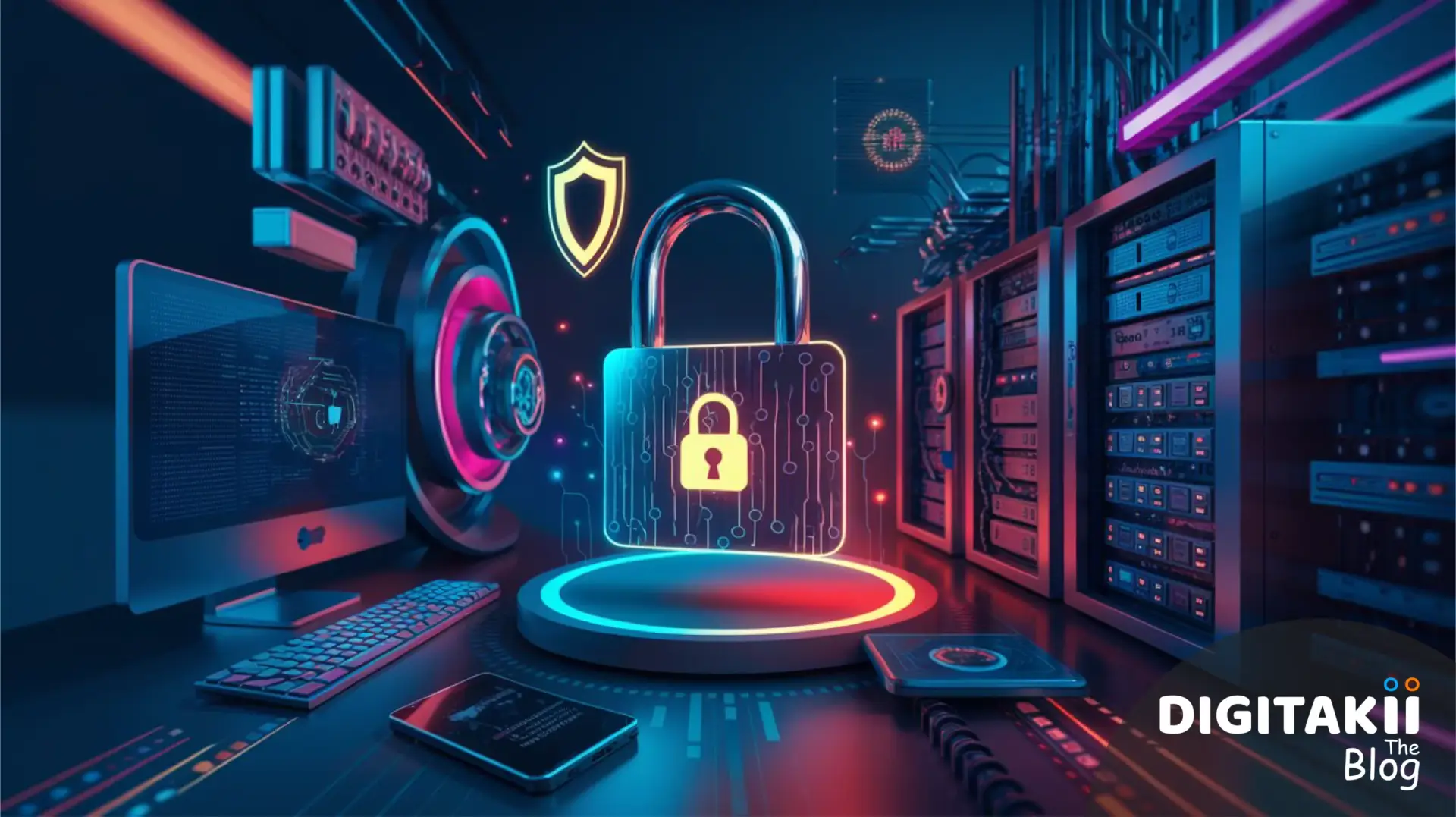In the ever-evolving world of cybersecurity, staying ahead of the curve is more crucial than ever. As we approach 2024, it’s essential to understand the emerging trends that will shape the landscape of digital security. Imagine navigating a labyrinth with evolving threats around every corner that’s the cybersecurity world we’re diving into. Let’s explore the top cybersecurity trends to watch in 2024 and what they mean for businesses and individuals alike.
The Rise of AI-Powered Threats and Defenses
Artificial Intelligence (AI) is no longer a futuristic concept; it’s an integral part of our digital infrastructure. In 2024, AI will play a significant role in both perpetrating and defending against cyber threats. Here’s how:
1. AI-Driven Attacks:
Cybercriminals are increasingly leveraging AI to enhance their attacks. AI can analyze vast amounts of data to identify vulnerabilities and automate attacks with unprecedented precision. For instance, AI-powered phishing attacks can craft highly personalized emails that are difficult to distinguish from legitimate ones, making them more dangerous.
2. AI-Enhanced Defense Mechanisms:
On the flip side, AI is also a powerful tool for cybersecurity defense. AI systems can analyze network traffic patterns, detect anomalies, and respond to threats in real-time. Machine learning algorithms can continuously improve their ability to recognize and counteract new types of attacks, making them a valuable asset in any security arsenal.
Practical Tip: To stay ahead of AI-driven threats, invest in AI-enhanced security solutions and ensure your team is trained to recognize and respond to AI-generated threats.
The Expanding Scope of Ransomware
Ransomware attacks have been on the rise, and 2024 will see an even greater evolution in these malicious campaigns.
1. Double Extortion Tactics:
Ransomware operators are increasingly using double extortion tactics. Not only do they encrypt your data, but they also threaten to release sensitive information if their demands aren’t met. This tactic puts additional pressure on victims to pay the ransom.
2. Targeted Ransomware:
We’ll also see a rise in targeted ransomware attacks where specific industries or companies are chosen based on their financial capabilities or the value of their data. Healthcare, finance, and critical infrastructure sectors are particularly vulnerable.
Practical Tip: Regularly back up your data and ensure that backups are not connected to your primary network. Implement robust incident response plans to minimize the impact of a ransomware attack.
The Evolution of Cloud Security
As businesses continue to migrate to the cloud, ensuring cloud security is becoming increasingly important.
1. Cloud Misconfiguration Risks:
Misconfigured cloud settings can lead to significant vulnerabilities. In 2024, we will see an increased focus on tools and practices to prevent these misconfigurations. Automated tools that scan for and rectify potential issues will become more prevalent.
2. Zero Trust Architecture:
Zero Trust models, which operate on the principle of “never trust, always verify,” will gain traction. This architecture requires continuous verification of every user and device trying to access resources, regardless of their location.
Practical Tip: Regularly audit your cloud configurations and adopt a Zero Trust approach to enhance security. Utilize automated tools to identify and correct configuration issues.
The Growing Threat of Internet of Things (IoT) Vulnerabilities
The proliferation of IoT devices is creating new security challenges.
1. IoT Device Exploitation:
With the increasing number of IoT devices in homes and businesses, attackers have more entry points to exploit. Many IoT devices lack adequate security measures, making them easy targets for hackers.
2. Enhanced IoT Security Measures:
To combat these risks, there will be a push for enhanced IoT security measures. This includes better device authentication, encryption, and the adoption of standards for IoT security.
Practical Tip: Ensure that all IoT devices are updated with the latest security patches and use strong, unique passwords for each device. Implement network segmentation to limit the potential impact of an IoT compromise.
The Emergence of Quantum Computing Threats
Quantum computing is on the horizon, and while it promises incredible advancements, it also poses significant threats to current encryption methods.
1. Quantum-Resistant Encryption:
As quantum computing advances, traditional encryption algorithms may become obsolete. The development of quantum-resistant encryption methods is crucial to protect sensitive data from future quantum-powered decryption.
2. Quantum Key Distribution:
Quantum key distribution (QKD) is an emerging technology that leverages quantum mechanics to create secure communication channels. It’s still in its early stages but holds promise for future-proofing data security.
Practical Tip: Stay informed about developments in quantum computing and begin exploring quantum-resistant encryption methods. Collaborate with experts to understand how this technology might impact your security strategies.
The Increased Focus on Privacy Regulations
Privacy regulations are tightening globally, and compliance will be a major focus in 2024.
1. GDPR and Beyond:
The General Data Protection Regulation (GDPR) has set a high standard for data protection, but other regulations are emerging worldwide, such as the California Consumer Privacy Act (CCPA) and similar laws in different regions.
2. Compliance Challenges:
Organizations will face challenges in navigating these diverse regulations and ensuring compliance across different jurisdictions. There will be an increased emphasis on data privacy practices and transparency.
Practical Tip: Invest in privacy management tools and processes to ensure compliance with relevant regulations. Regularly review and update your data protection policies to align with changing legal requirements.
The Impact of Cybersecurity Skills Shortage
The shortage of cybersecurity professionals continues to be a significant challenge.
1. Increased Demand for Talent:
As cyber threats become more sophisticated, the demand for skilled cybersecurity professionals is growing. Organizations are struggling to fill critical roles and secure their networks effectively.
2. Training and Upskilling:
To address this shortage, there will be a greater emphasis on training and upskilling existing employees. Organizations will invest in cybersecurity training programs to build internal capabilities.
Practical Tip: Develop a robust training program for your IT and security teams. Partner with educational institutions or online platforms to provide ongoing education and skill development.
FAQs About Cybersecurity Trends in 2024
Q: What are the biggest cybersecurity threats in 2024?
A: The biggest threats include AI-driven attacks, advanced ransomware tactics, IoT vulnerabilities, and potential risks from quantum computing. Staying updated on these trends and implementing robust security measures are crucial.
Q: How can businesses prepare for emerging cybersecurity trends?
A: Businesses should invest in AI-enhanced security solutions, adopt Zero Trust models, ensure cloud configurations are secure, and regularly train their employees. Additionally, staying informed about advancements in technology and privacy regulations will help in proactive preparation.
Q: What role does AI play in cybersecurity this year?
A: AI plays a dual role in cybersecurity. It is used by attackers to enhance the sophistication of their attacks and by defenders to improve threat detection and response capabilities. AI-driven solutions can analyze patterns, detect anomalies, and automate responses to emerging threats.
Q: How can I protect my IoT devices from cyber threats?
A: Protect your IoT devices by ensuring they are regularly updated with the latest security patches, using strong and unique passwords, and implementing network segmentation to limit potential impacts of a compromise.
Q: What should organizations know about quantum computing and encryption?
A: Quantum computing poses a threat to current encryption methods. Organizations should begin exploring quantum-resistant encryption techniques and stay informed about advancements in quantum technology to future-proof their data security.
Conclusion
As we move into 2024, the cybersecurity landscape continues to evolve at a rapid pace. Staying ahead of these trends whether it’s leveraging AI, addressing ransomware threats, securing cloud environments, managing IoT vulnerabilities, preparing for quantum computing, or navigating privacy regulations requires vigilance, adaptability, and proactive measures. By understanding and preparing for these emerging trends, you can better safeguard your digital assets and maintain a robust security posture.
#CybersecurityTrends2024 #AIinCybersecurity #FutureOfCybersecurity #RansomwareThreats #CloudSecurity #IoTSecurity #QuantumComputing #DataProtection #PrivacyFirst #TechInnovation #CyberDefense #DigitalSecurity #CyberAwareness #SecuritySolutions #EmergingTech #CyberResilience #Digitakii #DigitakiiTheBlog
===============================
Ready to dominate the digital world? 🚀💻
Don’t just exist online – THRIVE! At www.digitakii.com, we’re your secret weapon for digital success.
🌐 Stunning websites that convert 📱 Social media that sizzles 🔍 SEO that skyrockets your visibility 📊 Data-driven strategies for real results
Why blend in when you can stand out? Let’s craft your digital masterpiece together!
👉 Visit www.digitakii.com now and let’s make some digital magic! ✨
#DigitalMarketing #DigitalPresence #DigitalMarketingAgency
===============================



